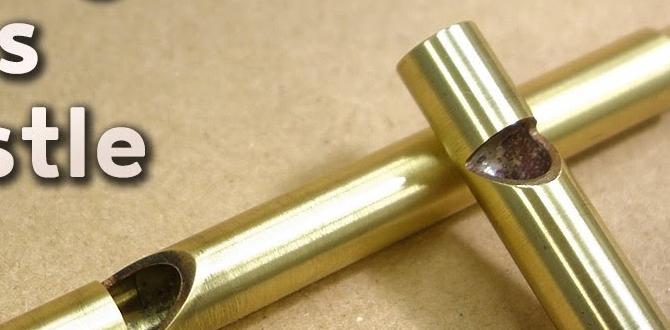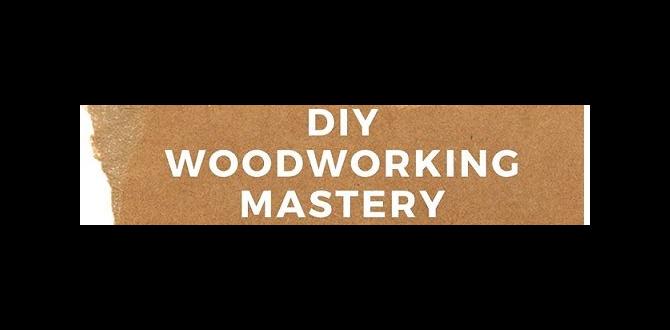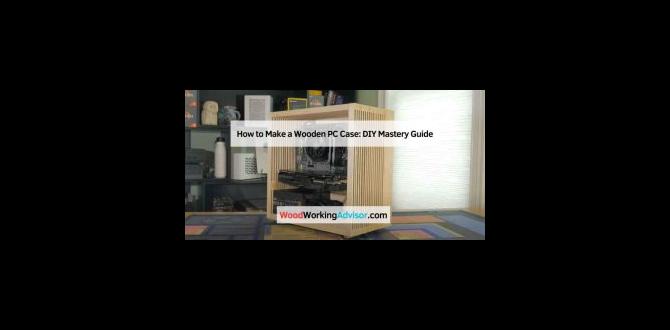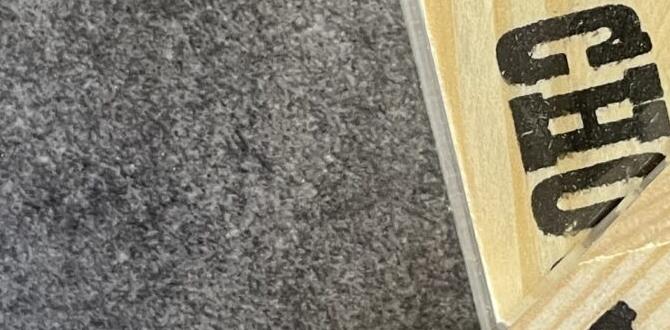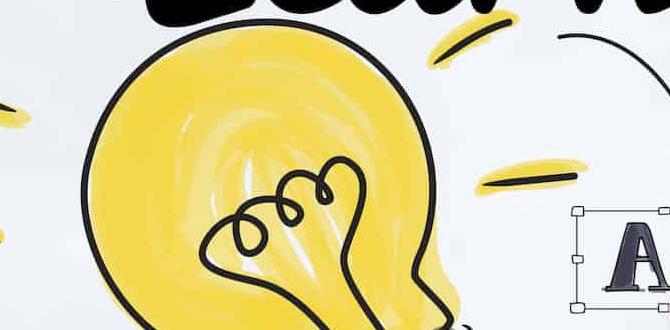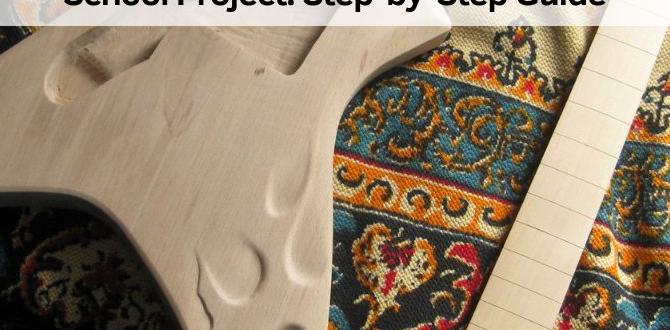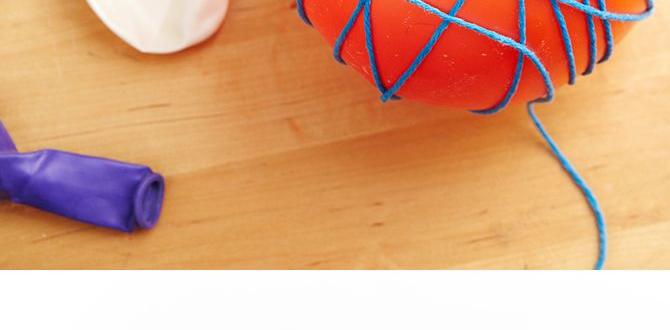Have you ever listened to a banjo and felt its joyful sound filling your heart? Imagine creating that beautiful music yourself. In this guide, we will show you how to build a wooden banjo from scratch. You don’t need to be a master craftsman to start. With a few simple tools and some wood, you can make your very own banjo.
Many people think making instruments is too hard. But it can be a fun and rewarding project! Just think about all the joy you will feel when you play your first tune. Did you know that banjos were popular in the 19th century? They have a rich history and a unique sound that people love.
This DIY mastery guide will walk you through each step. You’ll learn about choosing the right wood and tools. You’ll discover the secrets to crafting a quality banjo that not only looks good but sounds amazing, too! So, are you ready to dive into the world of banjo building? Let’s get started on this exciting journey!
Table of Contents
How To Build A Wooden Banjo: Diy Mastery Guide For Enthusiasts
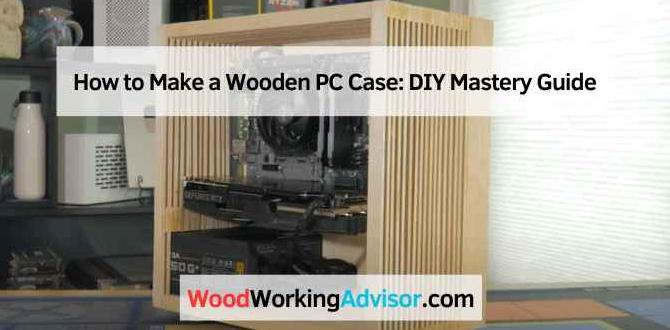
How to Build a Wooden Banjo: DIY Mastery Guide
Creating your own wooden banjo can be a rewarding project. This guide walks you through each step in a fun way. From selecting wood to assembling parts, you’ll learn essential skills. Did you know that banjos date back to Africa? Understanding their history adds depth to your project. You’ll also discover tips to customize yours, making it uniquely yours. Imagine strumming your creation, impressing family and friends with your craftsmanship! Dive in and embrace the joy of DIY!
Choosing the Right Materials
Types of wood suitable for banjo construction. Other essential materials and tools needed.
Choosing the right materials for your banjo is like picking the right toppings for a pizza—get it wrong, and you’ll end up with a disaster! The best wood for a banjo includes maple for sturdiness and mahogany for rich sound. You’ll also need some other supplies like strings, a drum head, and tools like a saw and glue. Remember, a skilled builder is only as good as their toolbox!
| Wood Type | Benefits |
|---|---|
| Maple | Strong and bright sound. |
| Mahogany | Warm, full tones. |
| Walnut | Balanced sound and beauty. |
Understanding Banjo Anatomy
Key components of a banjo. The function of each part.
Every banjo has a few key parts that work together to create music. First, there’s the rim, which is like the body of the banjo. It holds everything together and can be made from wood or other materials. Next, the neck helps you play notes and holds the frets. Then, we have the strings, which vibrate to make sound—like a happy cat purring! The head is the top part, vibrating to amplify sound. Finally, the bridge transfers the string vibrations to the head. Each piece plays an important role, and together, they make beautiful music!
| Component | Function |
|---|---|
| Rim | Form the banjo body; provides structure. |
| Neck | Where you press strings to play notes. |
| Strings | Vibrate to create sound. |
| Head | Amplifies sound; top surface. |
| Bridge | Transfers vibrations from strings to the head. |
Designing Your Banjo
Deciding on the size and shape. Customization options for aesthetics.
Designing your banjo is like planning a fun pizza party. First, think about the size and shape. Will it be a deep dish or thin crust? A larger banjo gives a rich sound, while a smaller one is great for portability. Next, let your imagination run wild with customization options. You can paint it bright colors or add unique designs that show your personality. Remember, the more unique your banjo looks, the more fun you’ll have strumming it!
| Size | Shape | Customization |
|---|---|---|
| Large | Round | Bright colors |
| Medium | Oval | Fun designs |
| Small | Unique | Your name |
Constructing the Neck
Stepbystep process to carve and shape the neck. Tips for ensuring structural integrity.
First, let’s shape that neck! Start with a sturdy piece of wood. Use a saw to cut it to your desired length. Be careful, as you don’t want to end up with a neck that’s shorter than your dreams! Next, grab a chisel and whittle away to create the perfect curve. Remember, smooth edges equal happy hands! To ensure it stays strong, sand the neck well and check for any weak spots. A little reinforcement goes a long way. Don’t forget, even the best banjo necks need a break now and then—a good break helps it sound even better!
| Tip | Description |
|---|---|
| Use Quality Wood | Choose hardwood for better durability. |
| Keep it Balanced | Ensure weight is evenly distributed for playability. |
Building the Rim and Body
Techniques for crafting the banjo rim. Assembly of the body for sound quality.
Start by cutting a circular piece of wood for your banjo rim. Use a jigsaw or a bandsaw, your choice! Make sure it’s even; otherwise, your banjo might look like it just got out of bed. Next, create the layers for the body. This helps with sound quality. Use lightweight wood for a brighter tone. It’s like picking the right snacks for movie night—light, crunchy, and full of flavor!
| Wood Type | Sound Quality |
|---|---|
| Maple | Bright tone |
| Mahogany | Warm tone |
| Birch | Loud sound |
Finally, assemble the parts carefully. Secure them tightly, and remember: it’s not a puzzle; if it fits, it should hold!
Installing the Frets
Best practices for fret placement. Tools needed for accurate installation.
To create a great sound on your wooden banjo, proper fret placement is key. Start by measuring the scale length. Use a fret board template to mark where each fret will go. Be accurate! For installation, you need a few tools: a fret press, a saw, and some glue. Here’s what you should gather:
- Fret wire
- Steel ruler
- Pencil
- Fret file
Make sure each fret sits snugly. This ensures clear sound when you play!
What tools do you need for installing frets?
For the best results, you’ll need a fret press, a saw, and a fret file. These tools shape and set the frets nicely.
Assembling the Banjo Components
Guidelines for integrating neck, rim, and other parts. How to ensure proper alignment and fit.
Integrating the neck, rim, and other parts of your banjo is like piecing together a puzzle, just way more fun! Start by gently positioning the neck onto the rim, ensuring everything lines up perfectly. You want it to fit snugly, like a cozy hug. Use clamps to hold them together while the glue dries, but don’t overdo it; it’s not a wrestling match!
| Component | Alignment Tips |
|---|---|
| Neck | Align it centrally for the best sound. |
| Rim | Check for roundness to avoid wobbles. |
| Strings | Make sure they are straight and not tangled! |
Lastly, double-check your work. A crooked banjo could send your music plans spiraling! Enjoy the process, and soon you’ll be playing tunes that might even make the squirrels dance!
Finishing Touches
Options for sealing and finishing the wood. Adding personal touches and decorations.
Now that your wooden banjo is almost done, the finishing touches are key! You can seal it with varnish, oil, or lacquer. Each has its own flair. Varnish gives a shiny look, while oil makes it look natural.
Want to add some pizzazz? Consider personal decorations! Stickers, paint, or even drawings can make your banjo unique. Just think—who wouldn’t love a banjo with a big smiley face on it? Below is a quick chart for finishing options:
| Finishing Option | Effect |
|---|---|
| Varnish | Glossy and protective |
| Oil | Natural and warm |
| Lacquer | Fast drying and tough |
Mix and match finishes to get your perfect style. Congratulations, you’re now a DIY banjo master!
Tuning and Testing Your Banjo
How to properly tune your new banjo. Initial sound checks and adjustments needed.
Tuning your new banjo is like giving it a voice. Start by tightening the strings to the right pitch. The goal is to make sweet music, not a cat fight! First, pluck each string and listen closely. You might even want your pet goldfish to judge your sound checks. If a string is too high, loosen it. If it’s too low, tighten it up. Don’t worry if it sounds funny at first—it will get better!
| String | Standard Pitch |
|---|---|
| 4th (Low D) | DF#A |
| 3rd (Middle A) | A |
| 2nd (High D) | D |
| 1st (High B) | B |
Once you’ve got the tuning down, play a few chords. Make adjustments based on how it sounds. Remember, a well-tuned banjo can make everyone dance, even grandma! So get tuning, test it out, and enjoy the happy banjo tunes!
Common Mistakes to Avoid
Pitfalls in the building process. Advice from experienced builders.
Building a wooden banjo sounds fun, but watch out for common blunders! One big mistake is skipping measurements. Even a tiny error can turn your banjo into an awkward-looking guitar. Experienced builders say, “Measure twice, cut once!” Another pitfall is using the wrong wood. Some woods are too heavy or weak; they won’t produce good sound. Make sure to choose wisely! Finally, don’t forget about tight connections. Loose parts can make a banjo sound like a clunky old machine. So, keep these tips in your toolkit!
| Mistake | Advice |
|---|---|
| Skipping Measurements | Measure twice, cut once! |
| Wrong Wood Choice | Pick the right type! |
| Loose Connections | Tighten everything up! |
Resources for Further Learning
Recommended books and online courses. Community forums and groups for banjo builders.
Learning to build a wooden banjo can be fun and exciting! Many resources can help you on your journey. Consider these suggestions:
- Books: Look for titles like “The Complete Banjo Manual” for tips and tricks.
- Online Courses: Websites, such as Udemy, offer step-by-step lessons.
- Community Forums: Join groups like Banjo Hangout to connect with other builders.
Sharing ideas with friends can make building easier and more enjoyable!
What books or courses can help with banjo building?
You can find excellent resources for banjo building. Books and online courses offer great advice and practical tips.
Conclusion
In conclusion, building a wooden banjo is a fun and rewarding project. You can start with simple materials and tools. Follow step-by-step instructions for best results. Don’t worry if it takes time; practice makes perfect. Keep experimenting, and you’ll improve your skills. Explore more DIY guides to expand your creativity. Let’s make music together!
FAQs
What Materials Are Necessary For Constructing A Wooden Banjo From Scratch?
To make a wooden banjo, you need some important materials. First, get a piece of wood for the body. You also need a neck that is made of wood. Don’t forget strings to make music and a drumhead for the sound. Finally, you’ll need glue and some tools to put everything together.
What Are The Step-By-Step Instructions For Assembling The Body And Neck Of The Banjo?
First, take the banjo body and lay it flat on a soft surface. Next, find the neck and align it with the hole in the body. Use screws to attach the neck to the body. Make sure everything fits snugly and feels tight. Finally, check that the neck lines up straight with the body.
How Do You Properly Tune A Handmade Wooden Banjo Once It’S Completed?
To tune your handmade wooden banjo, start by using a tuner or a tuning app. You will match each string to the right note. The strings should be tight enough to sound clear, but not too tight. If a string sounds off, gently tighten or loosen it. Keep practicing until all the strings sound just right!
What Tools Are Essential For Crafting A High-Quality Wooden Banjo?
To craft a high-quality wooden banjo, you need some important tools. First, you’ll need a saw to cut the wood into shapes. A chisel helps you carve designs and details. A drill makes holes for the strings. Finally, sandpaper is great for making everything smooth and nice to touch.
How Can I Personalize The Design And Finish Of My Wooden Banjo For A Unique Touch?
You can personalize your wooden banjo by adding paint or stickers in your favorite colors. You can also choose special wood finishes that make it shiny or keep it natural. Try carving your name or a special design into the wood. You could even change the strings to your favorite colors. These little changes will make your banjo special and unique to you!
